
According to CNN, the COVID-19 vaccine—including boosters for eligible individuals—has been added to the CDC’s schedule of routine vaccines for both pediatric and adult populations. Public health officials hope that this update will “normalize” the vaccine and encourage the general public to stay up to date, as they would with any other routine vaccine.
- News

This article describes the research validating the safety of pediatric COVID vaccines and their efficacy at preventing serious illness and death. It explores why some parents are still hesitant to vaccinate their children and provides some rationales for children to receive COVID vaccines.
- News
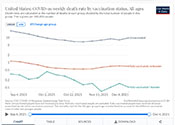
This resource includes data on COVID-19 mortality by vaccination status in several countries, including the United States, England, Switzerland, and Chile. Updated weekly. It also explains the impacts of the media’s use of language when reporting COVID-19 deaths.
- Data
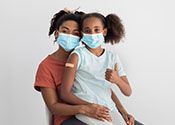
This vaccination resource library curated by the National Rural Health Association includes conversation starters and toolkits for addressing health misinformation that can help employers share vaccine facts and improve vaccination access for employees and families.
- Tools & School Guidance
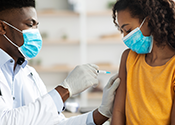
This fact sheet describes and explains how clinical trials and safety monitoring have demonstrated the safety of COVID-19 vaccines for children and teens, and addresses myths about receiving the vaccine.
- Tools & School Guidance

This Yale School of Medicine fact sheet provides answers to commonly asked questions about the newly authorized Pfizer and Moderna COVID-19 vaccines for children under 5 years old. Data is included on safety, efficacy, dosage, timing, and where and how to access the vaccines.
- News
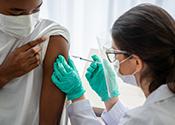
While there is no definitive answer yet, a growing number of studies suggest that getting a COVID vaccine can reduce — though not eliminate — the risk of longer-term symptoms. While the evidence is not yet conclusive, it is clear that vaccines offer protection against infections and hospitalizations, which in turn decreases the chances of getting long COVID.
- Research
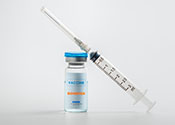
This FAQ provides key information about the safety, efficacy, and suggested timing of the recently released bivalent COVID booster shots, as well as vaccination information for children too young to receive the new boosters.
- Tools & School Guidance

This article details the FDA approval of a booster shot targeting COVID subvariants that have recently been dominant in the United States. Boosters are expected to be available in early September for adults and for children 12 and older.
- News
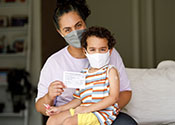
This website contains answers to vaccine-related FAQs in 7 languages, including information on how vaccines protect against variants and information about breakthrough infections. There is also a dedicated section for parents and caregivers, which includes information about how the COVID-19 vaccines work for kids, whether the vaccines are safe, and why doses are different for younger children.
- Tools & School Guidance

Bivalent COVID-19 boosters for children ages 5 and older, offering protection against the Omicron variant of the virus, have now been approved by both the FDA and the CDC. These boosters are available for any child in this age range who has already received their initial two-vaccine series.
- News

The Learning Network helps school and district leaders start or strengthen school COVID-19 testing and vaccination programs. Their website includes key takeaways, video clips, and resources from a series of webinars about running a school COVID-19 testing program. The website also includes an FAQ on using ESSER funding for testing and vaccination at K-12 public schools.
- Tools & School Guidance

This toolkit provides a range of newly updated resources from the U.S. Centers for Disease Control and Prevention as well as the Department of Health and Human Services COVID-19 Public Education Campaign to help increase COVID-19 vaccine uptake in schools and communities. The toolkit includes English- and Spanish-language resources for school and early childhood program leaders, teachers, parents, and parent leaders.
- Tools & School Guidance
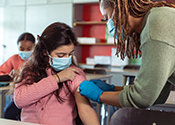
This article describes a school-based COVID vaccine initiative in 2021–22 that corresponded with vaccination rates of Seattle Public School students increasing from 57% to 80%. The community health outreach strategies that were employed in partnership with school health programs can be instructive to other school and public health personnel seeking to increase vaccine uptake among public school students.
- Research

This FAQ addresses common questions that parents may have about the safety of COVID-19 vaccines for children. It explains how mRNA vaccines (such as the Pfizer and Moderna vaccines) work and the research that explains why vaccines are now considered safe for young children.
- Tools & School Guidance
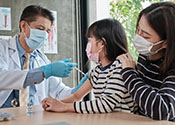
This Scientific American article describes the causes and implications of extremely low vaccine uptake in the United States for young children, particularly those under 5 years old. The article also discusses potential solutions, focusing on the role of the pediatrician as a trusted resource.
- News

This free, two-hour online class from Johns Hopkins University provides training that parents of school-age children, teachers, and school staff can use to help them discuss concerns parents and guardians might have about COVID-19 vaccines. The class supports parents in making evidence-based decisions about vaccinating their children.
- Virtual Training
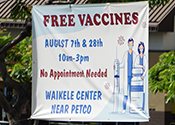
This detailed guide offers strategies for how to overcome vaccine hesitancy, such as the use of vaccine ambassadors and motivational interviewing, with concrete examples of these strategies in action.
- Tools & School Guidance

This toolkit has resources for organizations and individuals who want to help increase confidence in and uptake of COVID-19 vaccines among high school students. It includes toolkits such as fact sheets about COVID-19 and vaccines, sample text messages to use in outreach to students, tips for students to support vaccination efforts, and guidance on which masks to use and how to wear them correctly.
- Tools & School Guidance
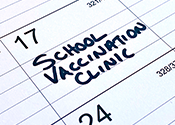
This resource provides action steps and resources for school leaders to support COVID-19 vaccine uptake and improve health literacy among staff, students, and families in their community, including setting up a school vaccination clinic and establishing partnerships with community health organizations.
- Tools & School Guidance

This FAQ states that individuals who have been infected with COVID-19 should still sign up for the vaccine, as re-infection is possible. It also makes clear that the vaccine cannot make individuals sick or alter their DNA.
- Research

This toolkit for parents provides answers to frequently asked questions, talking points, tips, and other science-based information about COVID-19 and vaccines that can be used in conversations and shared in-person or through social media.
- Tools & School Guidance

This toolkit provides planning and communication resources for schools and immunization partners on school located vaccination clinics. The Association of Immunization Managers was founded in 1999 and is made up of members who are leaders of state, local, and territorial immunization programs in the United States.
- Tools & School Guidance

The U.S. continues to lag in COVID-19 booster uptake, which is recommended for everyone 5 and older. This article provides a rationale for the protective effects of booster shots and describes what may change about booster composition (e.g., boosters covering multiple strains of the virus) and timing moving forward.
- Tools & School Guidance
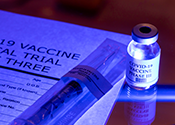
This chatbot, developed by researchers with expertise in addressing vaccine hesitancy, is designed to answer questions about vaccinations in a nonjudgmental way, particularly for those who might be uncomfortable speaking with friends and family about COVID-19 vaccines, which have been proven to be safe and effective.
- Virtual Training
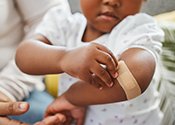
Age requirements for COVID-19 vaccines vary among large pharmacy chains, with many offering vaccines only for children ages 3 and older. This article describes policies for some of the major U.S. pharmacy chains and contains a link from a volunteer group called Vaccinate Under Five working to create a national pharmacy and provider database.
- News